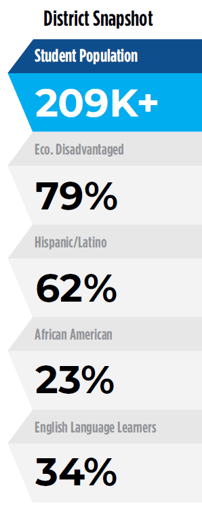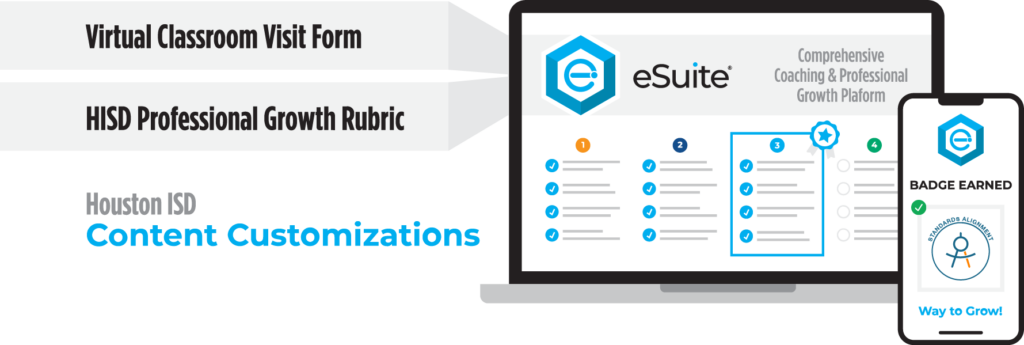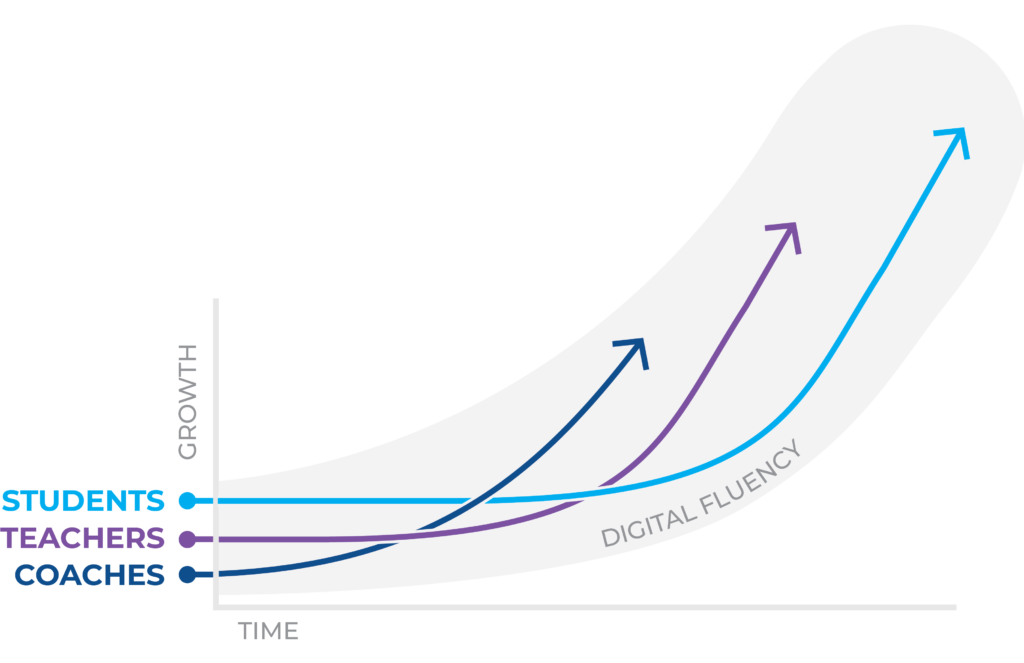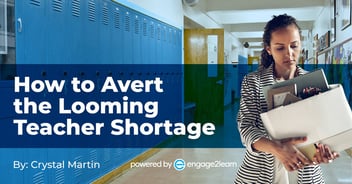Case Study of Houston ISD: Ensuring Digital Fluency in the Age of Differentiated Learning & Instruction

The COVID-19 health crisis led to the most significant long-term disruption in the history of American education. Beginning in March 2020, millions of students attending school in person abruptly shifted to online learning due to government-mandated stay-at-home orders put in place to stop the transmission of the coronavirus. At the onset of the COVID-19 pandemic in the U.S., many teachers had never taught online before and had to quickly learn how to use the necessary technology to continue to teach their students.
In the summer of 2020, Houston (ISD) assembled its team of Teacher Development Specialists (TDS)–the district’s resident literacy experts–to create an English Language Arts & Reading (ELAR) curriculum for Grades K-3. This work resulted in a full year’s worth of high-quality, differentiated curriculum ready to be used in ELAR classes across the district.
A significant body of research shows students are more successful and interested in school if they receive instruction geared to their readiness level. Differentiated instruction provides multiple approaches to what students learn, how they process content, and how they demonstrate what they have learned. Such differentiated instruction can help struggling students to progress toward skill proficiency and motivate advanced students to utilize higher-order thinking skills in the same classroom. Since differentiated instruction is student-centered, it is more engaging, interesting, and relevant to students.
THE PROBLEM
During 2020, the city of Houston became a major hotspot for COVID-19, and it became readily apparent that for most of the 2020-21 school year, Houston ISD students would be attending school remotely. Houston ISD’s Chief Academic Officer, Yolanda Rodriguez, knew almost immediately that while the content of the district’s freshly crafted curriculum provided rigorous and engaging in-person learning experiences for students. That same curriculum would not meet the needs of the district’s virtual students.
The problem was exacerbated by the fact that the Houston Independent school district’s K-3 grade levels had not yet widely implemented the Learner Management System (LMS) app, “itsLearning.” The two issues meant Houston ISD’s K-3 teachers would need extra support in how best to facilitate virtual learning for young learners using the district-created curriculum and LMS platform.
THE SOLUTION
Chief Rodriquez partnered with engage2learn (e2L) on a unique project developing a strategic plan for a school district. In order to help ensure the expertise of the teacher development specialists transferred to the daily practice of teachers facilitating virtual learning.
“I know e2L commands the virtual space. I have seen your work there, and we need that expertise to reach the goals we have for our coaches, our teachers, and our learners.”
Yolanda Rodriguez, Chief Academic Officer, Houston ISD
Phase 1: Grow the Coaches, Support the Teachers
Using e2L’s Coaches Academy, e2L partnered with Houston ISD to train and coach a cohort of Teacher Development Specialists (TDS) throughout the 2020-21 school year on how to convert the district’s curriculum into engaging virtual learning experiences. To do this, the e2L team first spent several months collaborating with the Houston ISD team to create custom coaching teacher resources to facilitate a teacher coaching support system aligned to the district evaluation system. The coaching teachers support system also integrated the district-created literacy curriculum, “itsLearning LMS,” and high-level, engaging digital tools for young learners.
The TDSs received personalized coaching on two relevant professional learning standards: the e2L Coach Standards and the Best Practices for Virtual Learning. These standards help increase teacher support capacity, educational leadership coaching and mentoring skills, virtual learning expertise, and digital fluency for each TDS, who will then turn around and coach and support K-3 teachers in Houston ISD. This integrated coaching system, which simultaneously supports both curriculum content and digital fluency, is the key to effectiveness and efficiency.
Phase 2: Data-Informed, District-Aligned Coaching & Growth
In a district of 200,000+ students, it was critical for Houston ISD to have data to inform and evaluate the effectiveness of its work. This is why Houston ISD chose to rely on e2L’s comprehensive coaching platform, eSuite, to organize all the coaching and growth data related to this project.
To better ensure Houston ISD’s goals are accomplished, e2L has integrated into eSuite specific features needed to measure and monitor the success of this project. e2L collaborated with Houston ISD to design and implement a new type of virtual classroom visit form that could be used to collect data on teacher implementation of the Best Practices for Virtual Learning. This new Virtual Classroom Visit form filled with virtual learning “look fors” has been incorporated into eSuite and will help measure teacher implementation of the Best Practice for Virtual Learning.

A customized Professional Growth Rubric for Houston ISD was also incorporated into eSuite. This rubric ensures all coaching in Houston ISD, whether by e2l or the TDS, is aligned with the district’s teacher evaluation system. This means that coaching teachers and TDS is not extra work for Houston ISD, but rather is essential work for ensuring the success of Houston ISD.
THE TAKE-AWAY
With eSuite, Houston ISD can begin to fill in missing pieces of the student achievement puzzle that ties teaching methods, learning tasks and activities, assessments, and coaching for educators directly to student outcomes. The data and evidence from coaching conversations documented in eSuite will give Houston ISD a way to look at instructional coaching and professional growth more strategically. Chief Rodriguez has high expectations for how eSuite reports will inform the district’s decision-making for each schools strategic plan and create a laser focus on best practices, including digital fluency, that ultimately impact and increase student achievement.

“Educator growth is a leading indicator of student growth.“
Shannon Buerk, Founder & CEO, engage2learn



